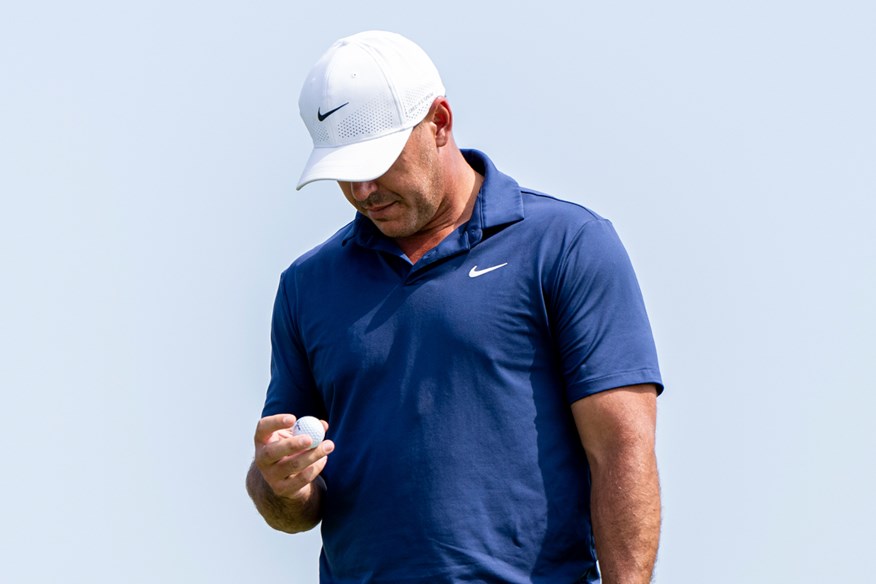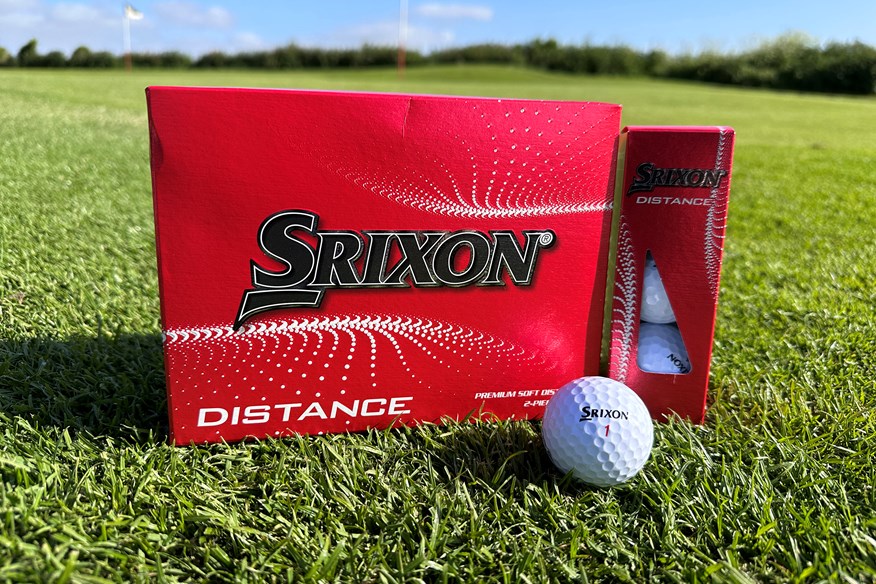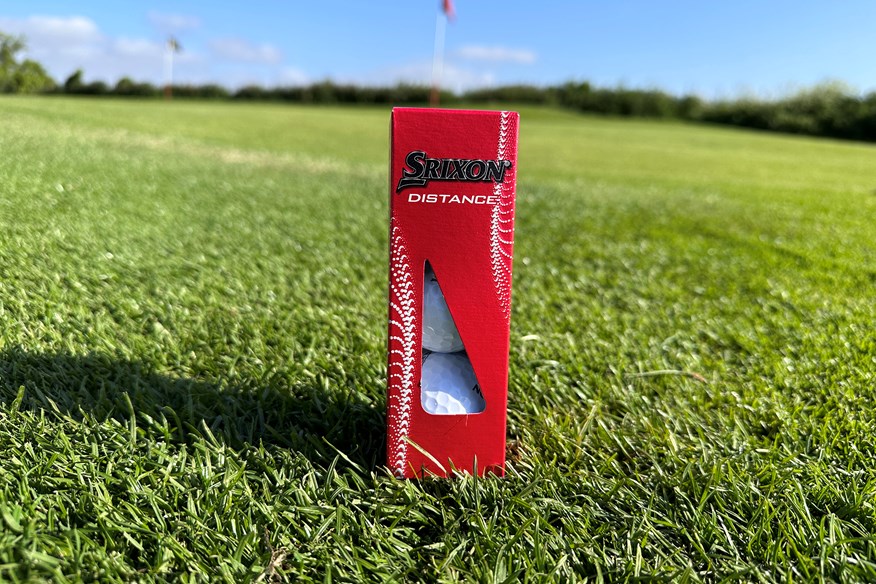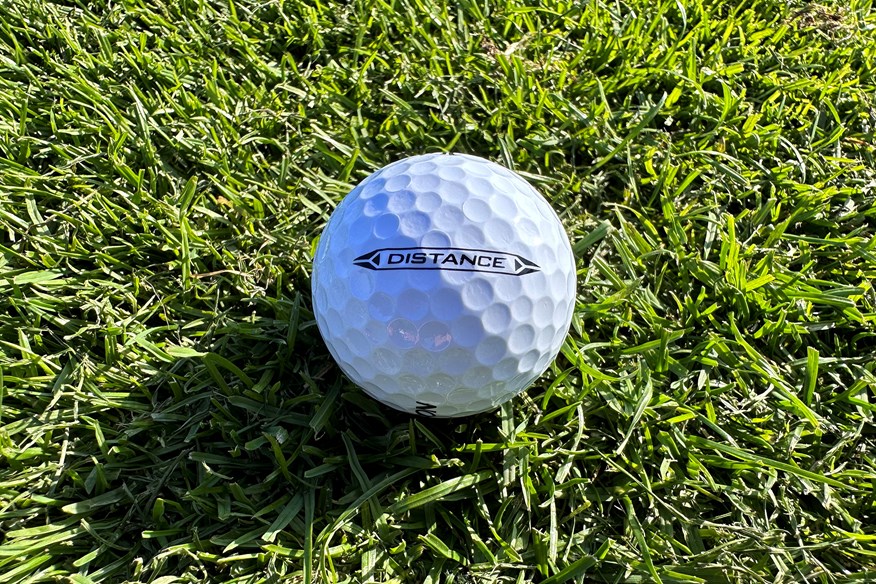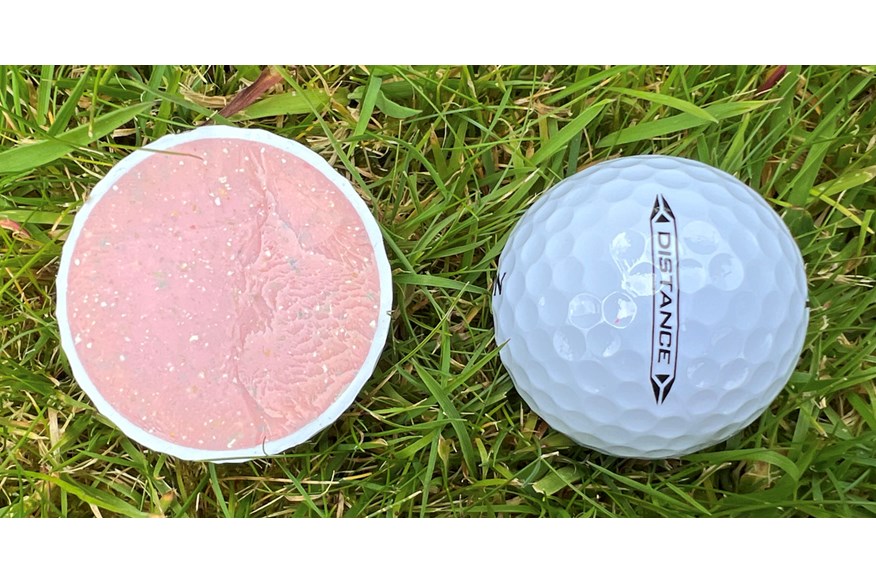The best-selling ‘distance’ golf ball that doesn’t actually deliver much distance
Last updated:
The Today’s Golfer robot golf ball test revealed some surprising results about one hugely popular golf ball – so should you avoid it at all costs?
Most golf equipment nowadays comes with elaborate product names that give you little idea of what it is or what it’s meant to do (here’s looking at you, Callaway Paradym AI Smoke Triple Diamond Max). But there are a few products with refreshingly on-the-nose titles.
Take the hugely popular Srixon Distance golf ball, for instance. You’d expect it to be a golf ball, from Srixon, that delivers plenty of distance. Simple. Effective. Does what it says on the tin. Except, according to our testing, it doesn’t.
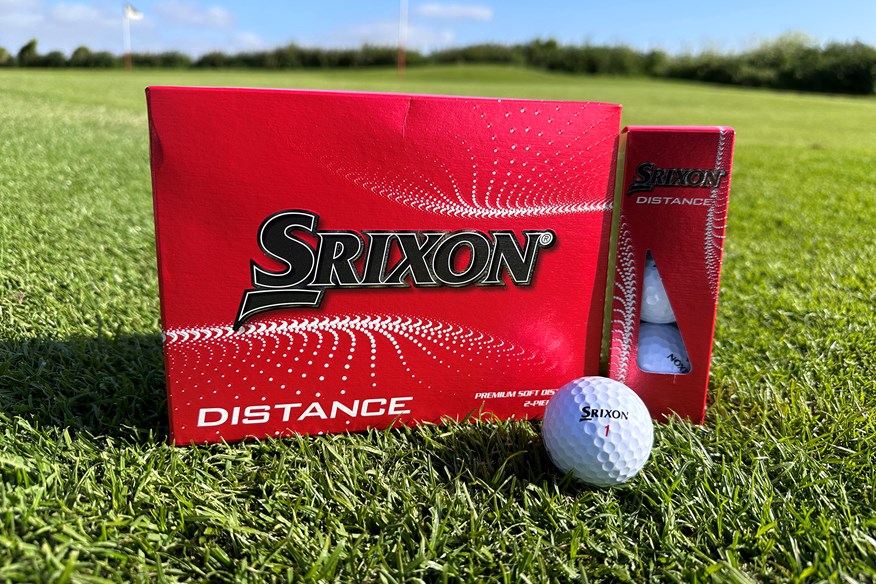
The recent Today’s Golfer robot golf ball test measured and compared 24 leading golf balls across every relevant performance metric. Among those was distance, where each ball was hit by a driver at 85mph, 100mph and 115mph, to see what yardage was generated at different swing speeds. The results found that the distance from the Srixon Distance was only in the name.
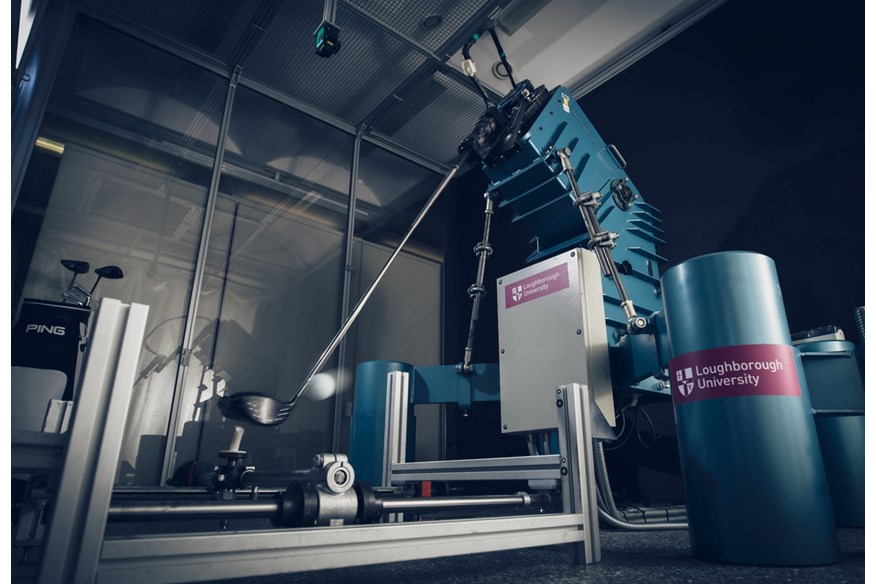
The Srixon Distance doesn’t deliver much distance
85mph swing speed
At 85mph, the Srixon Distance ranked 19th of 24 balls for driver carry distance. It was 2.1 yards below the average and 6 yards behind the Wilson Staff Model golf ball, which was the longest at this swing speed with a carry distance of 193.6 yards.
| Ball Speed (MPH) | Launch Angle (DEG) | Backspin (RPM) | Height (YDS) | Descent Angle (DEG) | Carry Distance (YDS) | Shot Area (SQ YDS) | |
| Wilson Staff Model | 124.6 (1) | 13.4 | 2657 | 39 | 29.4 | 193.6 (1) | 21 |
| Vice Pro Plus | 124.2 (T3) | 13.3 | 2670 | 38.7 | 29.1 | 192.4 (2) | 15.9 |
| Callaway Chrome Tour X | 124.2 (T3) | 13 | 2838 (Highest) | 39 | 29.6 | 192.1 (3) | 15.4 |
| Wilson Staff Model X | 124.5 (2) | 12.8 | 2722 | 38.7 | 28.6 | 191.8 | 17.9 |
| Seed SD 02 | 124.2 (T3) | 13.3 | 2615 | 38.5 | 28.7 | 191.8 | 10.8 (3) |
| Seed SD 01 | 123.9 | 13.5 | 2583 | 38.4 | 28.9 | 191.7 | 9.2 (1) |
| Titleist Pro V1 | 123.8 | 13.5 | 2513 | 38 | 28.4 | 191.2 | 13.6 |
| TaylorMade TP5 | 123.9 | 13.3 | 2637 | 38.4 | 28.7 | 191.1 | 14.3 |
| TaylorMade TP5x | 124.1 | 13.3 | 2565 | 38.2 | 28.3 | 190.9 | 17.8 |
| Callaway Chrome Tour | 123.9 | 13.2 | 2633 | 38.3 | 28.6 | 190.8 | 10 (2) |
| Vice Tour | 123.9 | 13.6 | 2428 | 37.8 | 28.1 | 190.3 | 19.4 |
| Titleist Pro V1x | 123.5 | 13.3 | 2646 | 38.2 | 28.5 | 190 | 15.5 |
| Vice Pro | 123.4 | 13.3 | 2548 | 37.8 | 28.2 | 189.4 | 22.4 |
| Snell Prime 3.0 | 123.2 | 13.2 | 2644 | 37.9 | 28.5 | 189.2 | 36.6 (Largest) |
| Vice Pro Air | 123 | 13.7 | 2477 | 37.6 | 28.3 | 189.2 | 30.8 |
| Srixon Q-Star Tour | 123.4 | 13.6 | 2442 | 37.6 | 28 | 189 | 26.6 |
| Callaway Chrome Soft | 123.3 | 13.2 | 2623 | 37.9 | 28.3 | 189 | 29.3 |
| Seed SD X1 | 123.3 | 12.9 | 2707 | 38 | 28.3 | 188.9 | 16.7 |
| Srixon Distance | 123.1 | 13.6 | 2352 | 37.1 | 27.5 | 187.6 | 29.1 |
| Snell Prime 4.0 | 122.9 | 13.3 | 2476 | 37.2 | 27.6 | 187.4 | 30.1 |
| Snell Prime 2.0 | 122.3 | 13.2 | 2671 | 37.4 | 28.3 | 186.9 | 12 |
| Kirkland Signature V3 | 122.3 | 12.9 | 2822 | 37.7 | 28.8 | 186.9 | 12.6 |
| TaylorMade SpeedSoft | 123 | 13.6 | 2236 (Lowest) | 36.5 | 26.7 | 185.7 | 14.8 |
| Srixon AD333 | 122.7 | 13.2 | 2398 | 36.6 | 26.8 | 185 | 30.9 |
| AVERAGE | 123.5 | 13.3 | 2579 | 37.9 | 28.3 | 189.7 | 19.7 |
100mph swing speed
At 100mph, the Srixon Distance ranked third-last for carry distance. With a carry distance of 236.8 yards, it was 4.2 yards behind the average and 8.6 yards behind the Wilson Staff Model X, which was the longest at this swing speed having clocked 245.4 yards.
| Ball Speed (MPH) | Launch Angle (DEG) | Backspin (RPM) | Height (YDS) | Descent Angle (DEG) | Carry Distance (YDS) | Shot Area (SQ YDS) | |
| Wilson Staff Model X | 145.7 (1) | 13.1 | 2652 | 51.3 | 34.5 | 245.4 (1) | 33.3 |
| Callaway Chrome Tour X | 145.4 (2) | 13 | 2832 (Highest) | 51.7 | 35.6 | 245.1 (2) | 31.3 |
| Callaway Chrome Tour | 145.1 (T3) | 13.6 | 2567 | 50.9 | 34.6 | 244.8 (3) | 41.3 |
| TaylorMade TP5 | 144.9 | 13.3 | 2703 | 51.1 | 35.1 | 244.3 | 17.9 (1) |
| Wilson Staff Model | 144.8 | 13.6 | 2585 | 50.8 | 34.6 | 244.3 | 20.3 |
| TaylorMade TP5x | 145.1 (T3) | 13.5 | 2506 | 50.6 | 34 | 244 | 27.4 |
| Vice Pro Plus | 144.3 | 13.5 | 2608 | 50.5 | 34.4 | 242.8 | 30.7 |
| Seed SD 02 | 144.3 | 13.6 | 2536 | 50.3 | 34.1 | 242.7 | 44.1 |
| Vice Pro | 144.3 | 13.6 | 2501 | 50.3 | 33.9 | 242.5 | 29.7 |
| Seed SD 01 | 143.8 | 13.6 | 2597 | 50.3 | 34.4 | 241.9 | 24.4 |
| Snell Prime 4.0 | 144 | 13.7 | 2473 | 50 | 33.8 | 241.8 | 18.9 (3) |
| Seed SD X1 | 144.1 | 13.1 | 2675 | 50.5 | 34.1 | 241.7 | 18.1 (2) |
| Vice Tour | 144.1 | 13.7 | 2365 | 49.6 | 33 | 241.1 | 56.9 |
| Titleist Pro V1x | 145.1 (T3) | 12.4 | 2539 | 50 | 32.1 | 240.6 | 23.7 |
| Snell Prime 3.0 | 143.4 | 13.8 | 2462 | 49.6 | 33.7 | 240.4 | 59.2 |
| Callaway Chrome Soft | 143.7 | 13.3 | 2514 | 49.8 | 33.4 | 240.3 | 31 |
| Titleist Pro V1 | 144.8 | 12.4 | 2519 | 49.8 | 31.9 | 239.8 | 26.7 |
| Vice Pro Air | 142.8 | 13.7 | 2530 | 49.5 | 34 | 239.3 | 29.8 |
| Kirkland Signature V3 | 142.7 | 13.2 | 2806 | 50 | 34.9 | 238.9 | 34.6 |
| Srixon Q-Star Tour | 142.9 | 13.6 | 2457 | 49.2 | 33.3 | 238.7 | 60.3 |
| Snell Prime 2.0 | 141.9 | 13.5 | 2638 | 49.3 | 34.2 | 237.5 | 30.8 |
| Srixon Distance | 143.7 | 12.7 | 2383 | 48.8 | 31.3 | 236.8 | 28.5 |
| Srixon AD333 | 142.6 | 13 | 2400 | 48.3 | 31.6 | 235 | 81.3 (Largest) |
| TaylorMade SpeedSoft | 142.1 | 13.6 | 2267 (Lowest) | 47.9 | 31.6 | 234.8 | 31.9 |
| AVERAGE | 144 | 13.3 | 2546 | 50 | 33.7 | 241 | 34.7 |
115mph swing speed
At 115mph, the Srixon Distance again ranked third-last for carry distance. Its 274.8 yards placed it 3 yards behind the average and 8.4 yards behind the Callaway Chrome Tour X, which topped the pile with 283.2 yards.
| Ball Speed (MPH) | Launch Angle (DEG) | Backspin (RPM) | Height (YDS) | Descent Angle (DEG) | Carry Distance (YDS) | Shot Area (SQ YDS) | |
| Callaway Chrome Tour X | 166.6 | 11.6 | 2155 | 59.7 (Highest) | 32.8 | 283.2 (1) | 31.2 (3) |
| Wilson Staff Model | 167.1 (2) | 11.4 | 2079 | 59.3 | 31.9 | 282 (2) | 50.5 |
| Wilson Staff Model X | 167.2 (1) | 11.3 | 2084 | 59.3 | 31.7 | 281.7 (3) | 38.6 |
| Callaway Chrome Tour | 166.5 | 11.3 | 2140 | 59.2 | 31.9 | 281 | 54.2 |
| Seed SD 02 | 165.8 | 11.4 | 2137 | 59 | 32.1 | 280.4 | 60.3 |
| Vice Pro Plus | 166.3 | 11.5 | 2064 | 58.8 | 31.7 | 280.3 | 35.4 |
| TaylorMade TP5x | 167 (3) | 11.1 | 2073 | 59 | 31.2 | 280.2 | 33.1 |
| Vice Pro | 165.8 | 11.4 | 2103 | 58.7 | 31.8 | 279.5 | 40 |
| Seed SD 01 | 165.4 | 11.5 | 2125 | 58.8 | 32.1 | 279.5 | 30 (2) |
| Vice Tour | 165.5 | 11.5 | 2072 | 58.4 | 31.8 | 278.9 | 52.4 |
| TaylorMade TP5 | 164.8 | 11.7 | 2080 | 58.3 | 32.1 | 278.3 | 86 |
| Titleist Pro V1 | 165.9 | 11.2 | 2066 | 58.3 | 31.1 | 278.1 | 29.5 (1) |
| Titleist Pro V1x | 166.7 | 11.1 | 2048 | 58.3 | 30.1 | 277.9 | 74.6 |
| Snell Prime 4.0 | 165.3 | 11.3 | 2111 | 58.3 | 31.4 | 277.8 | 63.4 |
| Snell Prime 3.0 | 165.4 | 11.5 | 2024 | 58.1 | 31.3 | 277.5 | 111.3 |
| Seed SD X1 | 164.7 | 11.3 | 2124 | 58.1 | 31.5 | 277 | 41.1 |
| Kirkland Signature V3 | 164.8 | 10.5 | 2296 (Highest) | 58.6 | 31.3 | 276.6 | 45.1 |
| Callaway Chrome Soft | 163.9 | 11.8 | 2079 | 57.7 | 31.9 | 276 | 174.8 (Largest) |
| Snell Prime 2.0 | 163.5 | 11.3 | 2226 | 58 | 32 | 275.7 | 130.5 |
| Vice Pro Air | 163.6 | 11.6 | 2082 | 57.5 | 31.6 | 275.2 | 60.3 |
| Srixon Q-Star Tour | 163.6 | 11.7 | 2077 | 57.5 | 31.6 | 275.1 | 69.4 |
| Srixon Distance | 164.7 | 11.4 | 2000 | 57.3 | 30.7 | 274.8 | 64.5 |
| Srixon AD333 | 162.7 | 11.4 | 2047 | 56.5 | 30.6 | 270.9 | 85.1 |
| TaylorMade SpeedSoft | 161.7 | 11.7 | 1984 (Lowest) | 55.8 | 30.5 | 269.1 | 33.3 |
| AVERAGE | 165.2 | 11.4 | 2095 | 58.3 | 31.5 | 277.8 | 62.3 |
But… there is a but
As we’ve seen, the Srixon Distance doesn’t compare well against the other 23 golf balls in our robot test when it comes to driver distance. But you have to remember that it’s a lot cheaper than most of those models.
When analyzing the robot test results, we divide each ball’s driving distance by its price to calculate the ‘cost-per-yard’.
On that metric, the Srixon Distance offers the third-best value for money, working out at 9p per yard.
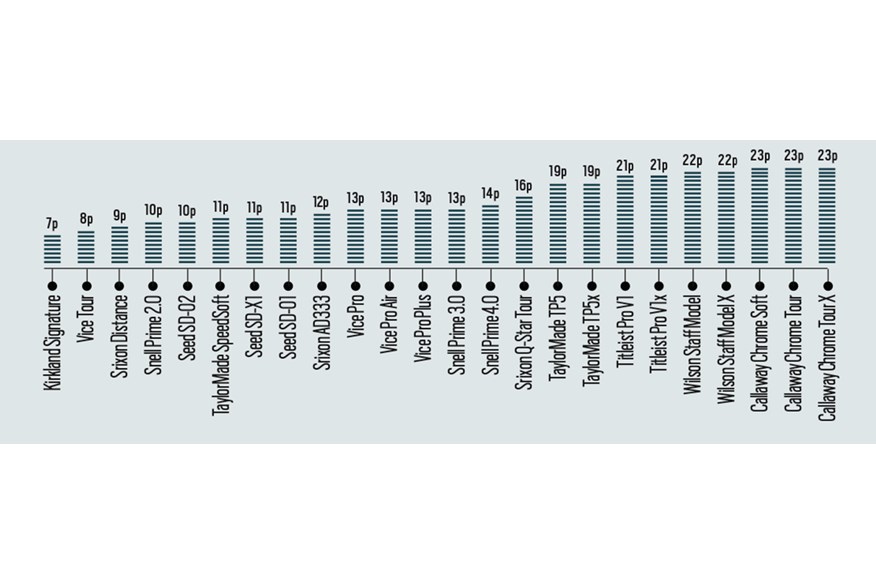
Some of the longest balls, including the Wilson Staff Model (and Model X) and Callaway Chrome Tour X, are more than twice as expensive to buy. Whilst they do deliver more distance, the yardage gap is nothing compared to the difference in price. As a result, those balls rank as the most expensive in cost-per-yard, clocking in at 22p and 23p per yard respectively. In short, if you want the most distance possible, you have to pay for it.
And the 9p per yard is calculated at the Srixon Distance’s recommended retail price (RRP). It’s often available for around 25% less than RRP, which would give it the lowest cost-per-yard of any ball in the test.
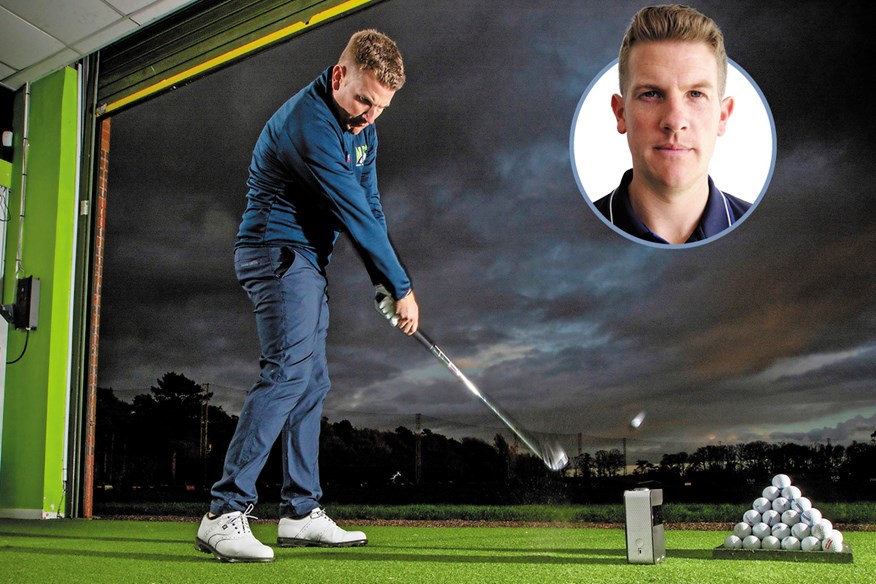
How does it perform with irons and wedges?
The Srixon Distance may not have pulled up any trees in terms of driver distance, but it performed better than expected with irons. Its 7-iron spin rate of 5,306RPM was only 94RPM lower than the test average, which is impressive given it was up against many balls costing a lot more. It gave up only half a yard of carry distance against the average, which is not something you’d notice on the course.
With a pitching wedge, the Srixon Distance ranked 8th of all 24 balls for backspin. Its 7,636RPM was 201RPM higher than the test average and saw it spin more than premium balls like the TaylorMade TP5 and TP5x, Callaway Chrome Soft and Chrome Tour, and the Wilson Staff Model. It had the shortest pitching wedge carry distance of any ball on test, but it was only 1.7 yards shorter than the test average, and this isn’t an area of the game where maximizing yardage is particularly important.
With a 2-piece construction (where the majority of the golf ball is a huge core in the center) and a firm ionomer cover the Distance is very much what golfers would expect from a traditional budget-style distance golf ball.
With an 89 compression, this model comes at distance, in a different way to the modern trend of going softer with less spin, very simply it's harder and therefore faster. To play the Distance successfully you will need to like the feel of a firmer golf ball and buck the trend over the last decade of using softer feeling, lower compression, and reduced spin models.
Read our full Srixon Distance golf ball review.
Pros
- A very fairly priced golf ball
- Decent levels of iron and wedge spin
- Good driver distance in the 2-piece ball category
Cons
- A budget ball that's genuinely difficult to fault
| Construction | 2-Piece |
| Cover | Ionomer |
| Cost per ball | $0.87 |
Should you buy it?
If you want the ultimate in distance and performance, clearly, the Srixon Distance isn’t the ball for you. If you do want to max out your distance, I’ve picked out the best golf balls for maximum distance at different swing speeds here. But, if value for money is important to you, the Srixon Distance is worth considering.
At a driver swing speed of 85mph, you’re giving up 2.1 yards compared to the average of all golf balls on test and 6 yards from the longest ball you could buy.
At 100mph, you’re giving up 6 yards from the average and 8.6 yards compared to the longest.
That’s not insignificant, but it’s not game-changing. If you went for a driver fitting and could only gain a few yards, you’d probably think long and hard about whether it was worth spending the £400-600 to upgrade. Depending on how many golf balls you get through in a year, you could save a serious chunk of cash by switching to the Srixon Distance without giving up too much in yardage.
You’ll get decent spin rates with irons, a firm but not unpleasant feel, good durability, and the comfort of knowing you’re playing perhaps the best value-for-money golf ball in the game.
